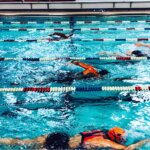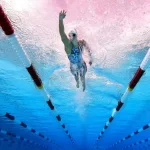“What should you eat to compete at your best?” The answer to this is complicated and depends upon several factors, including the type of training you’ll be doing (power vs endurance); duration of your training; stage of your training (off-season vs in-season, rest or competition); and personal food preferences.
Of course there is not one answer or plan that will work for every triathlete, but there are some guidelines that everyone can follow when planning a performance nutrition plan.
Three components every triathlete should include in their plan include:
- Quantity – this refers to the total amount of calories you take in from food and drinks. If you skimp on calories, this may cause your body to break down muscle protein, which can delay performance.Your total calorie needs will change depending on your training workouts. A more intense training will require more calories. Meeting your calories needs is important to provide yourself with energy to train, and to spare the breakdown of muscle protein.One way to determine if you are meeting your calorie needs is by keeping a performance and weight log. If your weight remains stable and your performance doesn’t decline, then you are most likely meeting your calorie needs. If not, then you should work with a sports nutritionist to determine what you individual calorie needs should be for your specific needs – training, rest days and competitions.
- Mix – this refers to the combination of foods that should make up your daily calorie intake. You should be consuming the right quantity and quality of proteins, carbohydrates, fat and fluids with every meal. For example, triathletes should choose milk over lemonade because milk provides the body with protein, minerals, vitamins, waters and carbohydrates in one glass.
- Timing– The timing of your calorie intake can be the key to your peak performance. The intake should be timed appropriately to ensure that:
- Carbohydrates are available for energy and glucose replacement
- Fluids are available to hydrate and rehydrate
- Protein is available for muscle repair, maintenance, and growth
Nutrition goals leading up to competition
Most triathletes have a few goals leading up to a competition – those include reducing GI stress, staying hydrated, and not gaining weight during your taper. These tips will help you reach those goals:
- Maintaining energy levels is crucial during the taper so that the craving response is reduced. To avoid this, you should combine a source of lean protein, healthy fat, a fruit or vegetable, and a starch during all meals. Overeating is caused by eating only a starch, which raises blood glucose levels.
- Do not increase your salt increase during taper; instead, do this during your training sessions weeks before the race. Otherwise it leads to bloating and water weight gain.
- A fiber taper that lasts a few days can help triathletes who have GI issues or a sensitive stomach. If you decrease your fiber intake by 25% each day two or three days out from the race, then focus on white starch products and juice you should be good. If you do this, then you need to reintroduce fiber slowly after your race by reversing your reduction plan – so increasing the fiber by 25% each day.
- You should drink when you’re thirsty and try not to hyperhydrate leading up to the race. If water is your only fluid throughout the day, you should offset that with salty foods to prevent hyponatremia.
- Since your training is reduced, your food intake should as well so you should not eat as often (or as much) during your taper so you don’t gain unnecessary weight.
Competition Day Nutrition
Race distance and time will dictate much of what you can consume on race day. Here are some recommendations:
- For early morning races have a small breakfast with some carbohydrates, protein and fat. If you have a sensitive stomach, stick to a protein shake or smoothie.
- Drink plenty of water – but again, not too much. Drink your water with salty foods or a sports drink.
- If you’re racing later in the day, you can have a normal breakfast followed by a liquid snack an hour or two before the race.
- What you consume during your event will depend on your weight, duration of the event and intensity at which you will be performing.
- Don’t forget about your nutrition after the race. In the first 15 to 30 minutes after the race you should be eating carbohydrates, protein, fat and fiber. Make sure you plan ahead so that there are food and beverages available after your race. Once you have your first post-race meal, you should then have another well-balanced meal two hours later.
The Bottom Line
Nutrition is an essential part of every triathlete’s training. While no two triathlete plans will be identical, everyone can follow the above guidelines for developing a performance nutrition plan. If you’d like more nutritional advice, taper advice and triathlete training then take a look at Tri Right Coaching. Contact me today to learn how I can help you with your nutrition and training needs!







